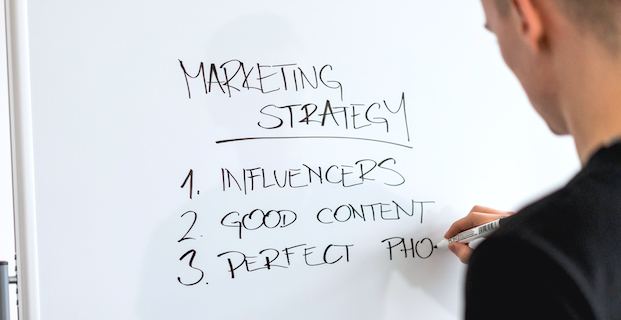Justifying the Cost of Marketing Your Business
Let’s start with the basics. Marketing is what you do to promote or sell your products or services. It can include advertising, building brand awareness and market research. Content marketing, on the other hand, is specifically online marketing that employs videos, blogs, and other targeted articles to stimulate interest instead of explicitly promoting your brand.

Measuring the ROI of content marketing, then, is to determine its worth in hard numbers. Is that even possible, given the definition above? Yes, it is — for two very good reasons:
- Businesses conduct activities for the sole purpose of selling more; therefore, the concept of content marketing would not even exist if it didn’t accomplish that goal.
- Content marketing has to be tied to a specific business goal, which can be measured.
The Goals of Content Marketing
Many companies begin content marketing to deliver “leads, leads and more leads.” So the prize is not just building brand awareness, but establishing a growing base of people who actually want to do business with your company. In this media-savvy market, that means marketing outside the traditional venues of advertising.
Companies are eschewing traditional advertising for content marketing. Nearly 30 percent of marketers report reducing their digital advertising budgets to produce more content. Content marketing reaches people in a way they don’t despise. That, in itself, generates brand acceptance. It’s also the first step toward creating leads.
How Content Marketing Works
Before you can measure the ROI of content marketing, understand the principles behind it. Traditional marketing uses content no one really wants. It’s forced on people as advertising. Content marketing, on the other hand, is content people want. It comes in the form of:
- Desired information — such as How Much Does Website Content Cost?
- Entertaining articles — such as Unique Wedding Invitation Ideas
- Added-value tips — such as Tax Tips for Home Buying
By the way, these are all blog posts written by Ray Access. But the goal here is to educate you, not just promote Ray Access. If you have the time and talent to create your own great content, do it. Once you know how it works and what you need, your business will benefit.
Bear in mind that for online content, the most effective results come from longer blog posts. The typical word count has risen from 808 words in 2014 to 1,054 words in 2016. Longer-form content generates something on the order of nine times more leads than shorter-form content.

The Costs of Content Marketing
To determine the ROI of content marketing, you need to know its costs. If you’re developing your own content in-house, you can accurately measure your monthly costs. You’re paying a managing editor, the person in charge of not only directing the work, but also editing the content so that it aligns with your goals and embodies your business’ personality. You also have costs associated with hosting and publishing.
If you outsource your content creation, you still have hosting and publishing costs. Depending on the size of your company, these costs can vary from about $100 a month all the way up to $32,000 a month. That’s quite a range, but it shows the difference between one blog post a month and a full strategic marketing effort across many platforms.
We’ve written about the cost of website content before. You need both alluring blog posts and effective words on your website for your business to generate ROI. One without the other leads to either low website traffic or high traffic with few conversions, so you need both to determine the ROI of content marketing.
The ROI of Content Marketing
Remember that the goal of content marketing is to increase leads, which adds sales, assuming your website can successfully convert those leads into customers. You can, therefore, measure the number of leads your website delivers. And since you know your costs, you can determine your cost per lead. This is basic business.
One study by the Content Marketing Institute found that content marketing produced a lower cost per lead than paid advertising. For large businesses over a two-year period, the difference was as much as 41 percent — 31 percent for mid-sized businesses. That quickly adds up to dramatic savings.

Proof of Content Marketing’s ROI
Ray Access isn’t the only company touting the ROI of content marketing. Many other concerns have achieved proven results, either for themselves or for their clients. For example:
- Ray Access has always said that content marketing is the least expensive, most effective way to market your business. When you examine the ROI of content marketing, it costs 62 percent less than traditional marketing while generating about three times the volume of leads.
- As more and more consumers rely on online content, your content marketing campaign aligns with this shift in media consumption habits. Nearly 75 percent of all marketers considered online content more valuable than traditional advertising.
- Buyers trust online content that connects with them. It’s becoming part of the normal purchasing process. About 90 percent of B2B buyers reported that online content played at least a moderate role in their purchasing decisions. Meanwhile, 95 percent of B2B buyers consider trustworthy content when they evaluate your company.
- Unlike paid advertising, the benefits of which stop immediately when you stop paying for it, content marketing offers long-term ROI. In fact, 10 percent of blog posts increase in value over time, delivering more organic search traffic.
- Effective website content drives conversions, too. The conversion rate can be six times higher for companies using content marketing than those that don’t.
In savvy hands, content for websites and blog posts can be versatile and reusable as well. Nearly 60 percent of marketers reuse and repurpose their original content two to five times. Ray Access delivers website content and blog posts as ghostwriters, meaning you own it and can reuse it however you wish.
Measuring the ROI of Content Marketing
How will you measure success? You can capture your growing brand awareness through the number of website visits, especially for first-time visitors. You can count the number of email or form-driven contacts. And you know how many of those become customers. Even if you use these simple metrics, you can determine the ROI of your content marketing.
In the future, more complex formulas will be available for measuring your efforts. Of course, also in the future, content marketing is likely to shift to more complex products — beyond effective website content and blog posts, which by then should be as commonplace as storefront signage. Two predictions are:
- “Companies will share more stories of corporate social responsibility, highlighting people and programs focused on sustainability, diversity and inclusion, and community involvement.” —Cara Cannella, senior brand editor
- “We’re going to see an increased investment in storytelling as a core communications strategy. Visionary leaders will form centralized content teams responsible for managing all content across the enterprise, and laggards will simply task their staff with ‘telling more stories’.” —Dan Gottlieb, senior sales executive
On the advice of marketing experts, therefore, you need to build the basics of your content marketing plan before you can calculate the ROI of content marketing. Blog regularly and create engaging content on your social media outlets to generate leads. Make sure your website content converts visitors into customers. If you don’t do that much, the ROI of content marketing for your business will be zero.
Ray Access is a content marketing firm that delivers targeted words to empower your business. Contact us about your specific project to receive a quote or discuss your needs. We write website copy, blog posts, e-newsletters and more. Everything we do is thoroughly researched, professionally edited and guaranteed original.
